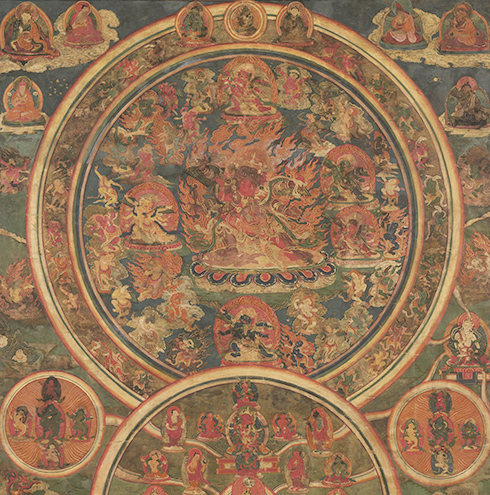
Theme: Hopes and Anxieties
Tracy Cochran reminds us that in times of fear, anxiety, and seemingly irreconcilable differences between people, widening our circle of compassion is our best hope for the future.
About the Mindfulness Meditation Podcast
The Rubin Museum of Art presents a weekly meditation session led by a prominent meditation teacher from the New York area, with each session focusing on a specific work of art. This podcast is recorded in front of a live audience, and includes an opening talk, a 20-minute sitting session, and a closing discussion. The guided meditation begins at 20:00.
If you would like to attend Mindfulness Meditation sessions in person or learn more, please visit our website at RubinMuseum.org/meditation.
This program is supported in part by the Hemera Foundation with thanks to our presenting partners Sharon Salzberg, the Interdependence Project, and Parabola Magazine.


Related Artwork

This is a visual representation of the Tibetan tradition of “Liberation upon Hearing in the Intermediate State” (Tibetan: bardo thö drol). Esoteric tantric teachings explain that at the moment of death, one’s consciousness encounters the possibility of achieving an enlightened state. However, if not recognized, terrifying visions brought on by one’s own negative karma flood the consciousness and prevent a good rebirth. Ritual specialists in the rite of bardo provide guidance during this intermediate state by reciting verses to keep the consciousness from fear and other negative emotions.
Mandalas such as these would appear in the visions of a person in transition through the various stages of the bardo. White Vajrasattva, seated near the central right edge and depicted within a conventional earthly landscape, emanates rainbow colored light that forms rainbow spheres, where peaceful and wrathful deities manifest. On the opposite side, yogis are meditating in their caves. Lineage masters including Padmasambhava and Karma Lingpa occupy the upper corners of the painting. Around the mandalas are protector deities. At the bottom, in a narrow band divided into sections, are vignettes depicting the Six Realms of Existence: gods, demi-gods, humans, animals, hungry ghosts, and hot and cold hells.
The landscape of this painting ties together the reality of someone’s death and the bardo ritual performed by a monk, depicted in the vignette of the human realm (third from the left), leading to the visionary manifestations of these mandalas.
About the Speaker

Tracy Cochran is editorial director of Parabola, a quarterly magazine that for forty years has drawn on the world’s cultural and wisdom traditions to explore the questions that all humans share. She has been a student of meditation and spiritual practices for decades and teaches mindfulness meditation and mindful writing at New York Insight Meditation Center and throughout the greater New York area. In addition to Parabola, her writing has appeared in The New York Times, Psychology Today, O Magazine, New York Magazine, the Boston Review, and many other publications and anthologies. For more information please visit tracycochran.org.
